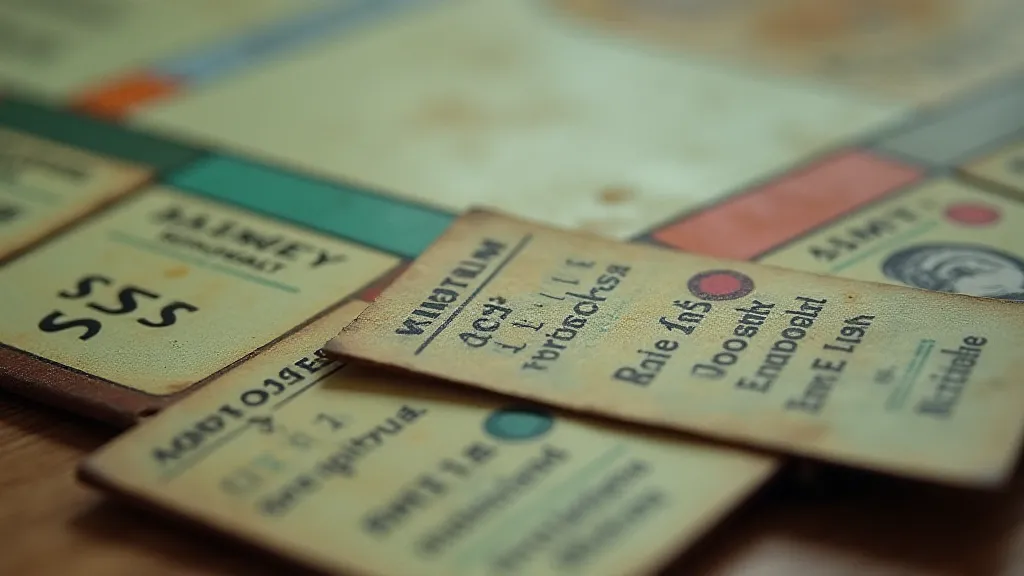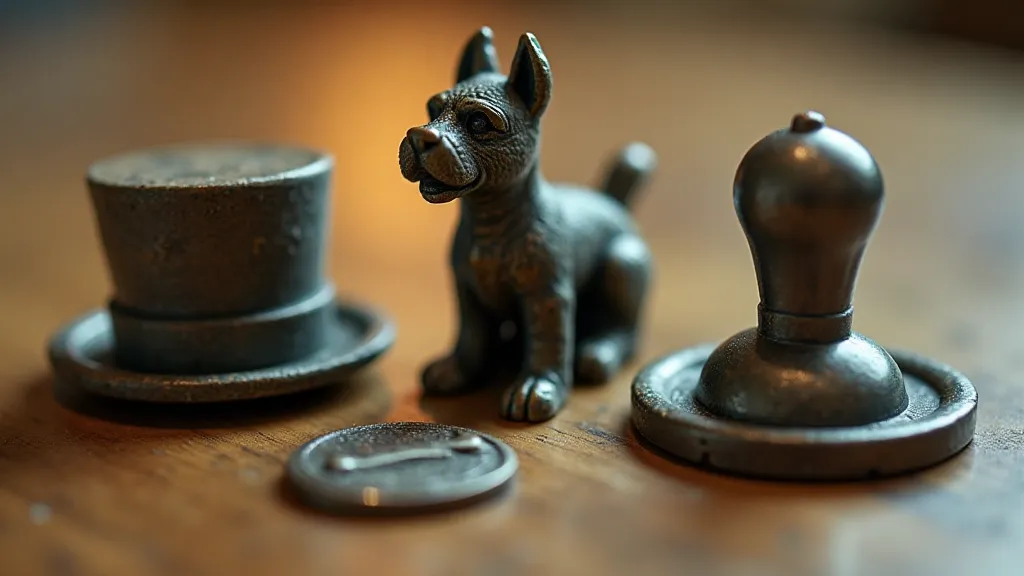The Cartographer's Secret: Mapping the Rise of Monopoly's Empire
The scent of aged cardboard, the whisper of worn tiles—there’s a peculiar magic that clings to vintage board games. They’re not just entertainment; they’re time capsules, whispering stories of family gatherings, childhood dreams, and the evolution of popular culture. Among these treasures, Monopoly stands as a titan, instantly recognizable and fiercely debated. But behind the familiar game of property acquisition and ruthless competition lies a surprisingly complex and contentious history, one that involves land reform movements, legal battles, and the remarkable journey of a single game’s ascent to global dominance. This is the cartographer’s secret, the painstaking effort to map Monopoly's empire.

The Seeds of Discontent: Lizzie Magie and The Landlord's Game
The story doesn't begin with Charles Darrow and a roll of the dice in Atlantic City. It begins decades earlier, with Elizabeth “Lizzie” Magie, a progressive economist and fervent believer in Henry George’s single-tax theory. George’s theory advocated for a tax on land values to redistribute wealth and curb the concentration of land ownership. To illustrate his ideas, Magie created a game called “The Landlord’s Game” in 1904. The game had two sets of rules: one that rewarded wealth accumulation (the "monopolist" rules) and another that demonstrated the benefits of a more equitable distribution of wealth. This ingenious concept was meant to educate and inspire social reform, not to simply entertain. The rules themselves were fairly basic, evolving organically as players adapted and modified them - a precursor to the complex game we know today. It is fascinating to consider how early games, stripped down to their core mechanics, gave rise to such enduring appeal. This early evolution speaks to broader trends within the world of games; it’s a story of innovation built upon previous designs, which is something we see reflected in countless other games across decades. The principles underpinning Magie's design show us how simple instructions, iterated upon by countless players, can lead to a complex and enduring pastime. For those interested in the historical evolution of play, exploring The Silent Narrative: Decoding the Hidden Meanings in Vintage Game Instructions offers a deeper understanding of how rules and instructions have shaped our gaming experiences.
Copies of "The Landlord’s Game" began circulating, morphing and adapting as players personalized the rules and property names. This organic evolution is crucial to understanding Monopoly’s genesis. It wasn't a single invention, but a gradual aggregation of ideas and modifications passed along through communities and families. These early versions were often hand-drawn and homemade, making them incredibly valuable to collectors today, a testament to their rarity and the dedication of their creators.
From Parlor Game to Patent Dispute: Charles Darrow and the Myth of Invention
Enter Charles Darrow, an unemployed salesman during the Great Depression. Legend has it he was inspired to create a game after noticing its popularity among friends and family. He claimed to have invented the game independently, and in 1935, he sold his version, initially titled "Monopoly," to Parker Brothers. This is where the narrative takes its most significant twist, and the mythos surrounding Monopoly’s creation truly begins.
The truth, as meticulously uncovered by researchers like Ralph Anspach, is far more complicated. Parker Brothers quickly realized that Darrow’s game bore striking resemblances to earlier versions of "The Landlord’s Game." The company attempted to acquire the rights to Lizzie Magie’s original game, but Magie refused to sell. She saw her creation as a tool for social commentary, not a vehicle for profit.
A Legal Battle for Recognition: Anspach vs. Parker Brothers
The subsequent decades saw a long and arduous legal battle, primarily between Ralph Anspach, a professor who created a competing game called “Anti-Monopoly,” and Parker Brothers (later acquired by Hasbro). Anspach sought to prove that Parker Brothers had knowingly appropriated elements of Lizzie Magie’s original game and misled the public about its origins. The legal wrangling lasted for years, ultimately culminating in a Supreme Court decision that acknowledged the historical significance of "The Landlord's Game" and vindicated, to some extent, Magie's contribution. The evolution of the rules and mechanics involved in these games provides a fascinating look at the interplay of design, appropriation, and legal challenges. In fact, the evolution of these gaming rules is not unique; the entire landscape of board game design has seen significant changes over time, a process which can be further explored by examining From Parlor to Prototype: The Evolution of Game Mechanics Through the Decades.
The sheer tenacity of Anspach’s fight underscores the importance of preserving these historical narratives. It's a reminder that the stories behind even the most commonplace objects can be filled with intrigue, injustice, and the struggle for recognition.
The Cultural Impact: More Than Just a Game
Beyond the legal complexities, Monopoly’s cultural impact is undeniable. The game has become a shorthand for ruthless capitalism, a microcosm of the competitive forces shaping our society. The thrill of acquiring properties, bankrupting opponents, and building a vast real estate empire resonates with our desires for success and power. Yet, the game also offers a darkly humorous commentary on the pitfalls of unchecked greed.
The game's longevity is testament to its adaptability. Countless themed editions – from Star Wars to Harry Potter – demonstrate its universal appeal. The core mechanics remain the same: acquire, develop, and dominate. But the ever-changing skin of the game keeps it relevant for new generations. The rise and fall of these regional board game manufacturers, often overlooked in the dominant narratives, provide an essential counterbalance to the story of Monopoly’s success. These smaller companies, often innovating within their local communities, offer a glimpse into a broader, more decentralized history of play, and can be explored further through The Silent Sentinels: Preserving the Legacy of Regional Board Game Manufacturers.

Collecting Vintage Monopoly: Rarity, Condition, and History
For collectors, vintage Monopoly offers a fascinating field of study. Early editions, particularly those pre-dating Parker Brothers’ mass production, are highly sought after. These include homemade versions and early, locally produced copies. The value is influenced by several factors: rarity, condition, and documented history. Editions with original packaging and rule books are particularly valuable. Variations in the board design, property names, and tokens can also contribute to rarity.
The condition of the game is paramount. Boards with faded colors, damaged edges, and missing pieces significantly reduce value. However, even games with imperfections can hold a certain charm, telling a story of their past ownership and use. Restoring vintage Monopoly requires careful consideration. Aggressive cleaning or repainting can diminish the game’s value. The goal is to preserve the integrity of the original artifact, celebrating its age and history. The precarious nature of tinplate, a common material in vintage games, means many have succumbed to rust and damage over the years. The fragility of these materials and the challenges of preserving them offer a compelling story of ephemerality and the passage of time. The stories attached to these games can often be heartbreaking, especially when thinking of those that have been irreparably lost. Considering the factors that contributed to these losses and how we can better protect them is vital.
Preserving the Legacy: A Cartographer's Duty
The rise of Monopoly is a complex and layered story, a cartographer's secret laid bare. It's a tale of innovation, appropriation, legal battles, and enduring cultural impact. By understanding the history behind this ubiquitous game, we gain a deeper appreciation for its significance and the people who shaped its journey. As collectors and enthusiasts, we have a duty to preserve these artifacts, to uncover the untold stories, and to ensure that the legacy of Monopoly – and the remarkable journey of Lizzie Magie’s original vision – endures for generations to come.





